Aerospace Engineering Launches Virtual Summer Camps to Pique Students’ Interest in Aero
July 2, 2021
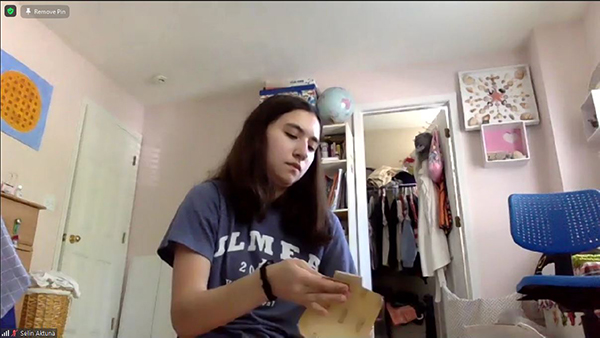 An aerospace GAMES camper works on building her rocket.
An aerospace GAMES camper works on building her rocket.Design an aircraft then watch it soar after launching it with a huge rubber band. Build a Mars lander to safely transport a real egg, then test the contraption by dropping it from a second story window. Zoom chat with a NASA flight director whose office provides a perfect view of mission control. These are just some of the informative and educational, yet fun activities 130 virtual campers from across the country got to experience during Aerospace Engineering’s (Aero’s) three summer 2021 camps.
From June 27–July 1, 2021, 30 rising 10th–12th graders participated in EAGER (Engineers Aiming for Gender Equity and Representation) camp, which seeks to increase the number of women and gender non-binary students pursuing STEM majors and careers. Plus, 50 rising 9th–12th graders took part in Aero’s two Illinois Aerospace Institutes, one from June 21–25, then another from July 12–16, 2021.
Similar to last year, Aero’s three summer 2021 camps were once again virtual due to the pandemic; however, the planning team, headed up Aero’s Director of Undergraduate Programming, Brian Woodard, sought to make activities as much like their long-standing residential camps as possible, while still taking advantage of unique opportunities made possible by the virtual setting.
Most of the camps’ Zoom sessions, which were led by Aerospace graduate students, addressed different aerospace topics—aerodynamics, rocket propulsion, orbits and missions, and flight mechanics, to name a few. Students were also introduced to CAD (computer-aided design) and aeronautics design. In addition, grad students gave virtual tours of their labs, showing participants various experiments and specialized equipment.
Campers also did two hands-on projects: designing and building gliders and Mars landers using supplies that had been shipped to them ahead of time. For instance, the lander was a variation on the classic “egg drop” science project. However, since students might have already done a project similar to that, Woodard and company added an additional component to make it a little bit more exciting. Just like in a real mission to Mars, where NASA most likely has to account to Congress for every dollar spent, students had a budget, and each material they used had a cost associated with it. For instance, a balloon cost as much as $10 million, while an inch of masking tape to hold it all together cost a million dollars.
Of course, probably the most fun part of all was testing their Mars landers. Once they’d built their contraption, students used a real egg to test their device by dropping it from the first floor, even the second floor or higher. Participants then submitted videos of themselves from the building through the testing phases, with the Aerospace team judging whose was the best based on their effectiveness, their budget, creativity, etc.
 An aerospace GAMES camper flies a simulation plane.
An aerospace GAMES camper flies a simulation plane.The other hands-on activity was building gliders; to design a successful aircraft, students would draw upon principles of aerodynamics, structures, and stability they’d learned during the week’s sessions. While during non-COVID years, each camp featured a fun final launch activity on the last day of camp. There campers would safely launch their gliders with the help of model rocket engines, which was not feasible this year. So, to make the launch activity more exciting, they provided campers with huge rubber bands to use to launch their aircraft in their yards.
The fact that the camps are virtual has meant that some of the more exciting hands-on aspects—using rocket launchers to launch their gliders—hasn’t been possible. However, the fact that camps are virtual has resulted in a few plusses in other areas. Take the clientele, for example. While their camps, especially IAI, have always attracted a few students from outside of Illinois, Woodard claims that, due to it being virtual, it may have a more national (even international) feel. “This time around, I expect it'll be a lot more students from outside of Illinois—which is cool.”
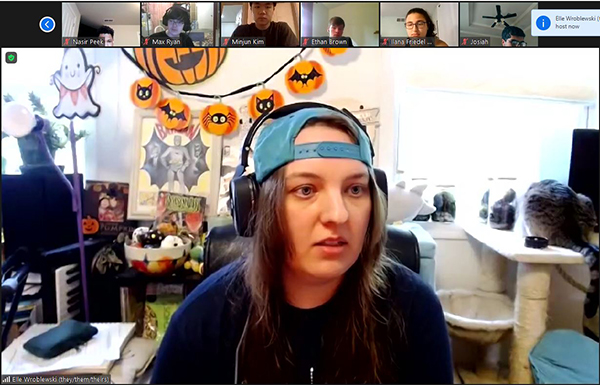 An aerospace GAMES camper works on building her rocket.
An aerospace GAMES camper works on building her rocket.Woodard was also excited about was the quality of the guest speakers they were able to line up as a result of the camps being via Zoom rather than in person. While the planning team has always been able to get some pretty interesting people to come and talk, they've usually been from a company that's somewhat close. This summer, they got some “really great guest speakers from all over the aerospace industry to talk; anybody will take half an hour…an hour out of their day to Zoom, right?”
Most of the speakers graduated from Aerospace at Illinois. For instance, one presenter was Ash Stahulak, an Electrical Systems Design Engineer at Boeing; another was Katie Kwan who's the director of air force programs for Northrop Grumman.
Woodard also scheduled a couple of Illinois alums currently at NASA. One grad from the early 2000s was Ryan Noe from the Johnson Space Center, who is one of NASA’s flight directors driving the space station; another Aerospace alum was Adi Boulos, a NASA Flight Director whose office is right next to mission control at the Johnson Space Center. Woodard explains that Boulos would “Zoom in and talk to us from mission control; he'd opened his office above mission control, and you can see in the background of his screen all the flight controllers and the big video displays—so that's really, really cool.”
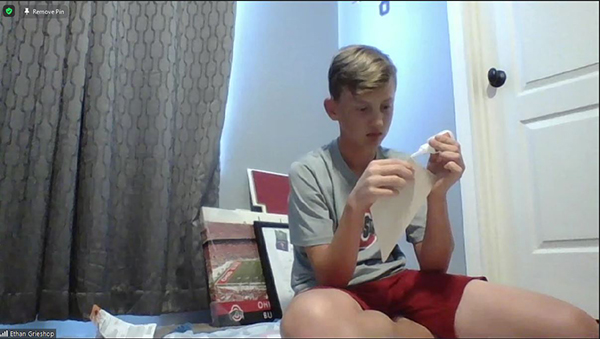 An aerospace GAMES camper flies a simulation plane.
An aerospace GAMES camper flies a simulation plane.Woodard thinks having virtual guest speakers will be easier than in the past, now that everyone is used to Zoom because of the pandemic. He admits to experimenting with virtual speakers last year, but students in the camp hadn’t seemed to like it, hadn’t paid attention, and had found it hard to ask questions. “But now that we're all used to it, I think it's going to be a whole different world with that.”
The team also scheduled ice breakers and socialization activities, trying to make camp feel more “in-person” despite it being virtual. So, they’re repeating the aerospace trivia game that was a really big success last summer. Students were broken up into Zoom breakout rooms and the grad student instructors asked questions and used Google sheets which participants could view simultaneously and update in real time. As students entered their answers in these Google sheets in the breakout rooms, other instructors quickly tallied up the scores. According to Woodard, last year’s students loved the game so much that they played quite a few rounds of it, thus the game was repeated this year as well. “It was a great icebreaker to get the students chatting with each other,” Woodard recalls.
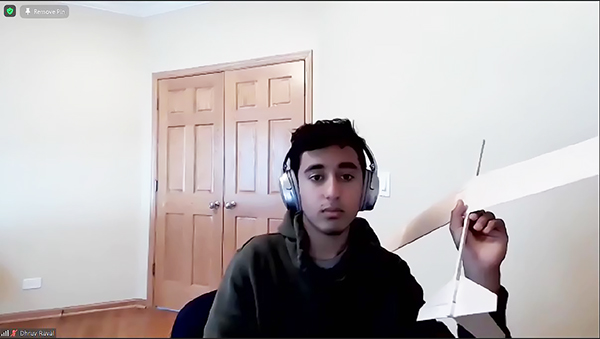 An aerospace GAMES camper flies a simulation plane.
An aerospace GAMES camper flies a simulation plane.In another effort to foster camaraderie and relationship building, the building workshops were being held in Zoom breakout rooms. Recalling that building workshops were pretty social in the past, Woodard claims the students would “all be talking and stuff—sometimes too social, right? They weren't making enough progress on their models. But it was always a very social thing, and so we're going to try to replicate that.” Their plan was that the hour and a half at the end of every day dedicated to students working on models and asking questions be scheduled in Zoom breakout rooms. The idea was that the breakout rooms replicate the live, in-person experience, where students would chat with the three or four people sitting close to them. “So, they all have something that they're doing, but they have a small group that they can chat with also,” Woodard explains. The hope is that while they build their projects, they’ll also build relationships.
Woodard shares what he most enjoys about running the camps: “My favorite thing is certainly seeing these students come and be successful later at the University of Illinois. I mean, now that we've been doing these camps long enough, I have students who attended the first couple years of the GAMES (Girls Adventures in Math and Engineering) camp, in particular, right? They came to Illinois got bachelor's degrees and have gone to Grad school and are participating in a Grad student panel.” He admits that it’s quite rewarding that the panel is comprised of three past campers—so, students he’s known since they were in high school, who all came to Illinois for a Bachelor's in Aerospace Engineering and who are now representing three different graduate schools: MIT, Texas A&M, and University of Colorado. The panel will be for the EAGER camp—women further along the STEM pipeline chatting with current high school girls, explaining why they chose Aerospace and why they made the choices that they did.
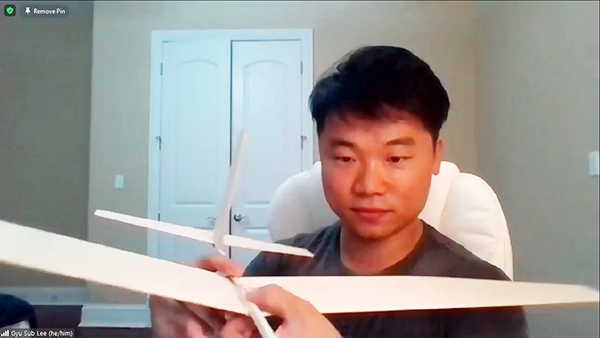 An aerospace GAMES camper flies a simulation plane.
An aerospace GAMES camper flies a simulation plane.“I love doing it, in general, because, like I said, it's so fun to see the students come and progress with them through the program,” he adds.
However, Woodard has a more personal reason for enjoying the camps: “I probably told this story before, right,” he shares, “but I have a personal connection to these outreach programs. When I was in high school in the mid 90s, I attended the Illinois Aerospace Institute during one of its first offerings, and that, for sure, solidified Aerospace Engineering and the University of Illinois to me.” So, for Woodard, that personal connection is one reason he loves the camps. He finds being able to do that for these students quite rewarding.
Story and Photos by Elizabeth Innes, Communications Specialist, I-STEM Education Initiative
More: 8-12 Outreach, Aerospace Engineering, Summer Camp, Women in STEM, 2021
For additional I-STEM articles about Aerospace GAMES camps, see:
- Aerospace Engineering Camps Seek to Ignite High Schoolers’ Interest in Aerospace, STEM
- AERO G.A.M.E.S Campers Soar with New Aerospace Knowledge
- G.A.M.E.S. Camp Seeks to Navigate Girls into Aerospace Engineering
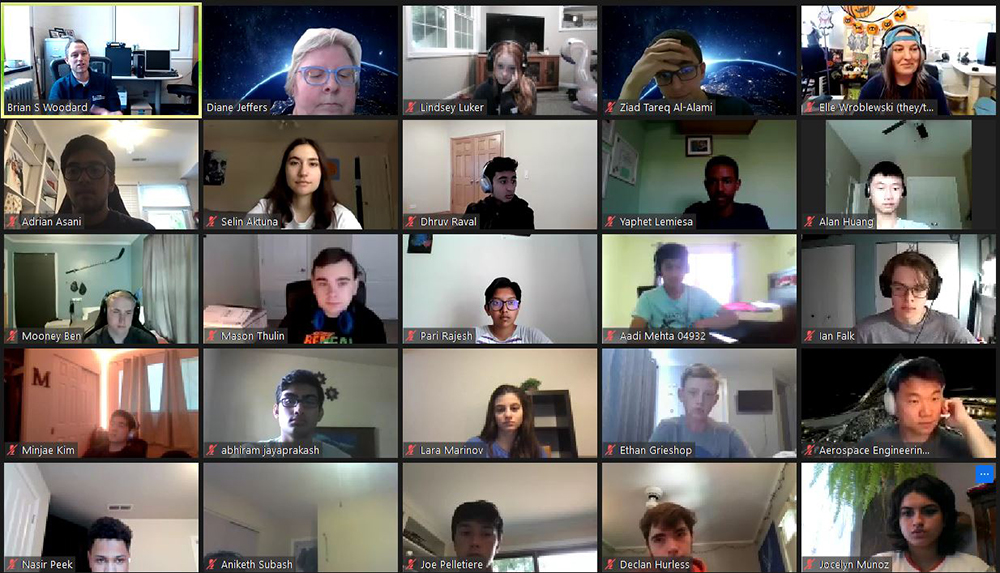 An aerospace GAMES camper flies a simulation plane.
An aerospace GAMES camper flies a simulation plane.












.jpg)
















